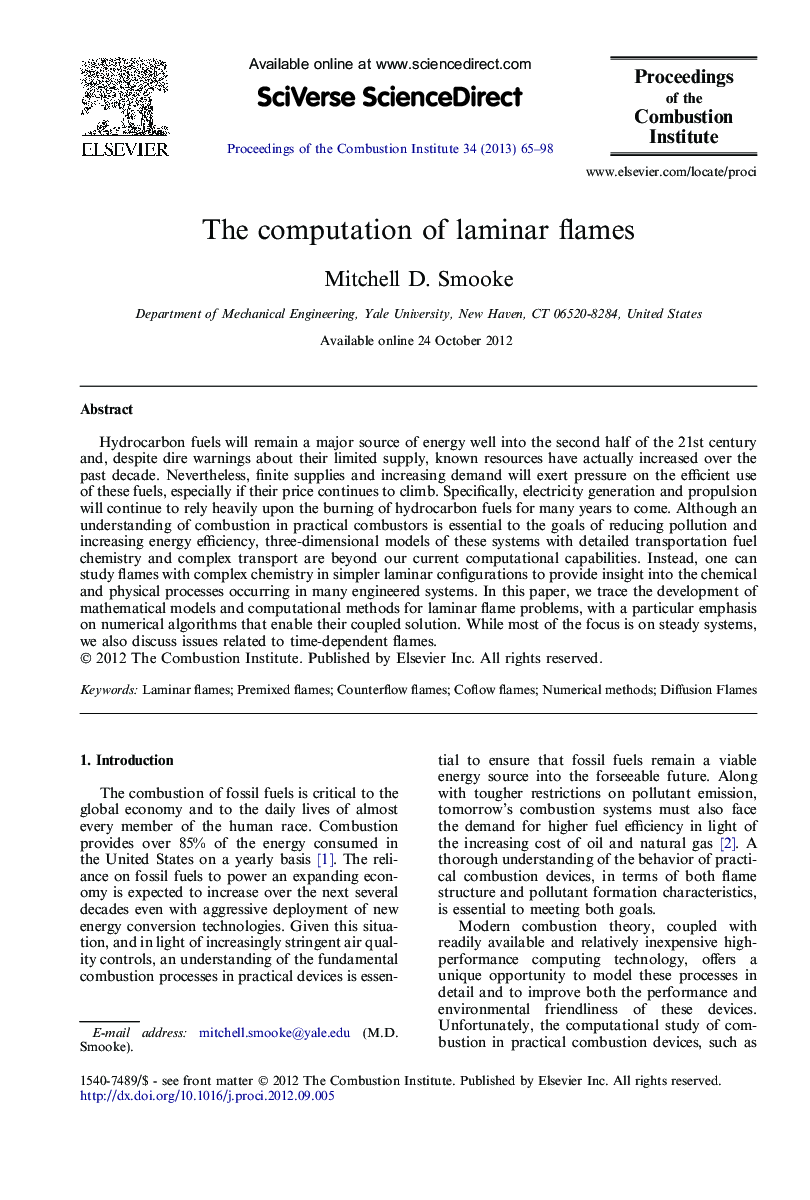| Article ID | Journal | Published Year | Pages | File Type |
|---|---|---|---|---|
| 241111 | Proceedings of the Combustion Institute | 2013 | 34 Pages |
Hydrocarbon fuels will remain a major source of energy well into the second half of the 21st century and, despite dire warnings about their limited supply, known resources have actually increased over the past decade. Nevertheless, finite supplies and increasing demand will exert pressure on the efficient use of these fuels, especially if their price continues to climb. Specifically, electricity generation and propulsion will continue to rely heavily upon the burning of hydrocarbon fuels for many years to come. Although an understanding of combustion in practical combustors is essential to the goals of reducing pollution and increasing energy efficiency, three-dimensional models of these systems with detailed transportation fuel chemistry and complex transport are beyond our current computational capabilities. Instead, one can study flames with complex chemistry in simpler laminar configurations to provide insight into the chemical and physical processes occurring in many engineered systems. In this paper, we trace the development of mathematical models and computational methods for laminar flame problems, with a particular emphasis on numerical algorithms that enable their coupled solution. While most of the focus is on steady systems, we also discuss issues related to time-dependent flames.
